| Although I have tried to be very careful, I also must caution you not to rely on this book, or any other single book, as a guide to herb toxicity. Cross check the safety of plants with various other up-to-date authorities and never rely on any single source for such information. Bear in mind that a celebrated old reference book, Sturtevant's Edible Plants of the World, states that the seeds of the "love pea" (Abrus precatorius) have nourishing qualities. In fact, they are extremely poisonous and need prolonged special preparation to destroy the poison. |
| This was derived from the Ayurvedic herb, Rauwolfia serpentina, whose root was chewed by millions of Indians and Africans for mood elevation for 30 centuries. It wasn't until 1931, however, that Western scientists finally "discovered" this plant and not until 1952 that they uncovered the potent chemical in the root, reserpine. This became the basis of the modern tranquilizer industry. A drug company executive said at the time, "We finally figured out that one million Indians couldn't be wrong" (267). |
Brenda Davis and Tom Barnard
See book keywords and concepts |
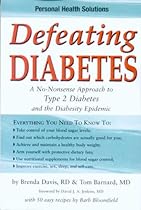 Stevia is an herb in the chrysanthemum family native to Paraguay that also grows in Brazil and Argentina and is widely cultivated in Asia. Stevia has been used for centuries to sweeten foods, including tea. Stevia leaves and herbal powder made from whole leaves are reported to be ten to fifteen times sweeter than table sugar. Refined extracts of stevia called steviosides (a white powder containing 85 to 95 percent steviosides) are approximately two to three hundred times sweeter than table sugar. Most stevia has a slightly bitter aftertaste and a faint herbal or licorice flavor. Stevia is an herb in the chrysanthemum family native to Paraguay that also grows in Brazil and Argentina and is widely cultivated in Asia. Stevia has been used for centuries to sweeten foods, including tea. Stevia leaves and herbal powder made from whole leaves are reported to be ten to fifteen times sweeter than table sugar. Refined extracts of stevia called steviosides (a white powder containing 85 to 95 percent steviosides) are approximately two to three hundred times sweeter than table sugar. Most stevia has a slightly bitter aftertaste and a faint herbal or licorice flavor. |
Lesley Tierra
See book keywords and concepts |
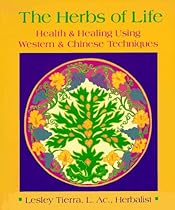 In this way it can eliminate heat and energy and so is not a Yang herb as such. In small amounts, however, it can generate warmth and stimulate circulation. Then it has a Yang effect.
As another example, ginseng is sweet and slightly bitter whereas cinnamon is spicy and sweet. Ginseng is a dense and slow-growing root which warms and strengthens the energy while cinnamon is a bark which warms and stimulates circulation. In terms of energy, cinnamon is hot and ginseng warm, yet in terms of Yin and Yang, ginseng is more Yang than cinnamon. In this way it can eliminate heat and energy and so is not a Yang herb as such. In small amounts, however, it can generate warmth and stimulate circulation. Then it has a Yang effect.
As another example, ginseng is sweet and slightly bitter whereas cinnamon is spicy and sweet. Ginseng is a dense and slow-growing root which warms and strengthens the energy while cinnamon is a bark which warms and stimulates circulation. In terms of energy, cinnamon is hot and ginseng warm, yet in terms of Yin and Yang, ginseng is more Yang than cinnamon. |
James Green
See book keywords and concepts |
 Yield: about 2000 ml
200 Gm Dry herb (in moderately coarse powder)
1000 ml Glycerin (50 percent by volume of the menstruum)
300 ml Ethyl alcohol (15 percent)
700 ml Distilled water
Making the glycerite
1. Powder and weigh dried plant and place the powder into a large jar that can be tightly closed.
2. Prepare custom menstruum (see samples above). When blending other solvents (water, vinegar, alcohol) with glycerin for your menstruum, be sure to mix together all the liquids of the menstruum thoroughly in a separate container before adding them to the powdered plant material.
3. Yield: about 2000 ml
200 Gm Dry herb (in moderately coarse powder)
1000 ml Glycerin (50 percent by volume of the menstruum)
300 ml Ethyl alcohol (15 percent)
700 ml Distilled water
Making the glycerite
1. Powder and weigh dried plant and place the powder into a large jar that can be tightly closed.
2. Prepare custom menstruum (see samples above). When blending other solvents (water, vinegar, alcohol) with glycerin for your menstruum, be sure to mix together all the liquids of the menstruum thoroughly in a separate container before adding them to the powdered plant material.
3. |
| Next time you prepare this elixir, modify it by doing things a little differently; poke some coffee beans or clove buds into the orange peel, or use a mandarin orange, work in an herb or two, use a different brandy or a different sugar, or all of the above, whatever. You'll love this one; it's totally eccentric the Addams family would smile fondly upon its antics.
A bottle of vinegar can be found in nearly every household. |
| Try to get as much herb into the mixture as you can whde allowing enough base material to eas-dy bind and hold it aU together.
NOTE: Using glass beakers aUows you to observe the mixture better, and most importantly, the thin walls reduce the chance of overheating. Metal pots and double boders work fine, but they offer more of a chaUenge when it comes to heat control.
5. When using a double boiler, place the top of the boder containing the mixture of ingredients into the bottom, which contains water that has been brought to a bod and removed from the fire. |
| This can be any device having a broad, fiat end that can be used to tamp down the powdered herb while packing it into the cone. A 10" length of 3/4" to 1" diameter wooden doweling sawed off squarely at the end works well. |
Andreas Moritz
See book keywords and concepts |
 The Native American herb called chaparral, although it tastes very bitter, is also an excellent liver and blood purifier.
19. Apply Daily Oil Therapy
011 therapy is a simple, yet astoundingly effective, method of cleansing the blood. It is effective for numerous disorders, including blood diseases, lung and liver disorders, tooth and gum diseases,
Dandelion root (1 oz.) Licorice root (1 oz.) Wild yam root (1 oz.) Bearsfoot (1 oz.)
Comfrey root* (VS oz.) Agrimony (1 oz.) Barberry bark (1 oz.) Tanners oak bark (1 oz. The Native American herb called chaparral, although it tastes very bitter, is also an excellent liver and blood purifier.
19. Apply Daily Oil Therapy
011 therapy is a simple, yet astoundingly effective, method of cleansing the blood. It is effective for numerous disorders, including blood diseases, lung and liver disorders, tooth and gum diseases,
Dandelion root (1 oz.) Licorice root (1 oz.) Wild yam root (1 oz.) Bearsfoot (1 oz.)
Comfrey root* (VS oz.) Agrimony (1 oz.) Barberry bark (1 oz.) Tanners oak bark (1 oz. |
Daniel B. Mowrey, Ph.D.
See book keywords and concepts |
 Investigators of Indian medicine found that several tribes used this herb in the same manner as the whites (17). It is used primarily as a diuretic (for which reason it is often called gravel root), stimulant and astringent tonic, directly influencing chronic renal and cystic problems, especially where uric acid levels are high (18). It produces reliable urine flow in cases where the desire is there, but the product is being suppressed. See Also arthritis
KELP & CAYENNE import nutritional and chemical support for this blend. Investigators of Indian medicine found that several tribes used this herb in the same manner as the whites (17). It is used primarily as a diuretic (for which reason it is often called gravel root), stimulant and astringent tonic, directly influencing chronic renal and cystic problems, especially where uric acid levels are high (18). It produces reliable urine flow in cases where the desire is there, but the product is being suppressed. See Also arthritis
KELP & CAYENNE import nutritional and chemical support for this blend. |
Lesley Tierra
See book keywords and concepts |
 A restoring and rejuvenative herb, licorice is a general tonic for the whole body. It strengthens the digestive system and improves energy, especially when honey-roasted, which gives it a warmer energy. This increases its use for poor digestion and assimilation difficulties from coldness and lowered functioning. This form also more strongly builds the blood and the energy in those with palpitation or irregular pulse.
Licorice is also calming and alleviates stress, relaxes muscle pains and creates feelings of peace, contentment and harmony. A restoring and rejuvenative herb, licorice is a general tonic for the whole body. It strengthens the digestive system and improves energy, especially when honey-roasted, which gives it a warmer energy. This increases its use for poor digestion and assimilation difficulties from coldness and lowered functioning. This form also more strongly builds the blood and the energy in those with palpitation or irregular pulse.
Licorice is also calming and alleviates stress, relaxes muscle pains and creates feelings of peace, contentment and harmony. |
| For those who easily and frequentiy catch cold and often feel tired, this is the perfect herb as it treats chronically weak lungs with shortness of breath and low energy. It further lifts prolapsed organs, stops spontaneous sweating, eliminates swellings, including a puffy face, and treats collapse of energy, exhaustion, edema due to lack of energy circulation and kidney and bladder infections that do not respond to diuretics.
Astragalus also strengthens digestion, improves metabolism, increases appetite and treats malnutrition and diarrhea. |
| Dentie, an ash made from the calyx of eggplant, also works well to stop bleeding as do fireplace ashes and the leftover ashes from burning moxibustion (a therapy described in the chapter on Home Therapies which burns the herb mugwort). Yet, in a pinch, the ash from burning some strands of human hair will work effectively. To do this, cut off enough hair to yield 1/2 teaspoon of ash, probably a 1" by 3" section. The hair does not need to be that of the person bleeding; anyone's hair will do. |
Robert S. McCaleb, Evelyn Leigh, and Krista Morien
See book keywords and concepts |
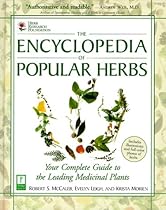 Results with Siberian ginseng were compared with those of a control group of workers who did not take the herb but had similar working conditions. Those in the Siberian ginseng group took 4 ml of an alcohol-based extract of Eleutherococcus daily every other month for 12 months, except for July and August. Morbidity, or illness, was 50 percent less in the Siberian ginseng group, and lost workdays were reduced by 40 percent. Ninety-five percent of the workers who took Siberian ginseng reported subjective improvements in overall health. Results with Siberian ginseng were compared with those of a control group of workers who did not take the herb but had similar working conditions. Those in the Siberian ginseng group took 4 ml of an alcohol-based extract of Eleutherococcus daily every other month for 12 months, except for July and August. Morbidity, or illness, was 50 percent less in the Siberian ginseng group, and lost workdays were reduced by 40 percent. Ninety-five percent of the workers who took Siberian ginseng reported subjective improvements in overall health. |
Lesley Tierra
See book keywords and concepts |
 For information contact:
Creative Nutritional Cooking
Joan Anderson c/o East West herb Course
21 Hale Street
Beverly, MA 01915
Weights and Measures
Weights and Measures
1 pound - 453 grams
1 ounce = 28.3 grams
16 ounces (dry) = 1 pound
1 gallon = 4 quarts
1 quart = 2 pints
1 pint = 2 cups
1 cup = 8 fluid ounces
1 cup = 16 tablespoons
1 teaspoon = 60 drops
1 tablespoon = 3 teaspoons
1 fluid ounce = 2 tablespoons
1 fluid ounce = 8 fluid drachms
1 fluid ounce = 28.4 milliliters
1 fluid drachm = 3.55 milliliters = 1 large teaspoon
1 kilogram = 2 pounds, 3. For information contact:
Creative Nutritional Cooking
Joan Anderson c/o East West herb Course
21 Hale Street
Beverly, MA 01915
Weights and Measures
Weights and Measures
1 pound - 453 grams
1 ounce = 28.3 grams
16 ounces (dry) = 1 pound
1 gallon = 4 quarts
1 quart = 2 pints
1 pint = 2 cups
1 cup = 8 fluid ounces
1 cup = 16 tablespoons
1 teaspoon = 60 drops
1 tablespoon = 3 teaspoons
1 fluid ounce = 2 tablespoons
1 fluid ounce = 8 fluid drachms
1 fluid ounce = 28.4 milliliters
1 fluid drachm = 3.55 milliliters = 1 large teaspoon
1 kilogram = 2 pounds, 3. |
Lester A. Mitscher and Victoria Toews
See book keywords and concepts |
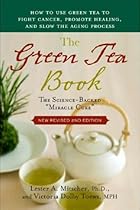 Consequently, it is hard to determine in early records which herb is being discussed. The second difficulty in tracing the history of tea arises from the fact that whenever a new Chinese dynasty came into power, it was common procedure for the new ruling emperor to distort previously accepted historical accounts. If the members of the new dynasty wished to credit themselves for the discovery of tea, they would.
The first reference to the cultivation of tea appeared in a.d. 350, in Kuo P'o's updated version of an ancient Chinese dictionary, the Erh Ya, first written in the eighteenth century B. Consequently, it is hard to determine in early records which herb is being discussed. The second difficulty in tracing the history of tea arises from the fact that whenever a new Chinese dynasty came into power, it was common procedure for the new ruling emperor to distort previously accepted historical accounts. If the members of the new dynasty wished to credit themselves for the discovery of tea, they would.
The first reference to the cultivation of tea appeared in a.d. 350, in Kuo P'o's updated version of an ancient Chinese dictionary, the Erh Ya, first written in the eighteenth century B. |
Daniel B. Mowrey, Ph.D.
See book keywords and concepts |
 Leukocyte production in radiology patients has been promoted by the herb. In rabbits, the number of circulating granulocytes has been increased by Echinacea (28). Finally, Echinacea extracts (injected i.v.) dramatically increased blood properdin levels (29). Properdin helps neutralize bacterial and viral blood toxins. These findings suggest that Echinacea significantly stimulates the body's own blood cleansing system. See Also skin disorders, fevers & infections
OTHER NUTRIENTS
The ability of the blood to perform its many functions depends on a continual and adequate supply of nutrients. Leukocyte production in radiology patients has been promoted by the herb. In rabbits, the number of circulating granulocytes has been increased by Echinacea (28). Finally, Echinacea extracts (injected i.v.) dramatically increased blood properdin levels (29). Properdin helps neutralize bacterial and viral blood toxins. These findings suggest that Echinacea significantly stimulates the body's own blood cleansing system. See Also skin disorders, fevers & infections
OTHER NUTRIENTS
The ability of the blood to perform its many functions depends on a continual and adequate supply of nutrients. |
| Analysis of the plant revealed the presence of atropine, a fact that should have been a clue to the investigators that the herb was, in fact, not Burdock root, but the article never indicates that anything other than Burdock root was being analyzed (heavily contaminated Burdock root would have been another alternative, but the authors didn't clarify the situation). I called the main investigator and asked about it. He admitted that they did not verify the identity of the plant; in fact, they doubted it was Burdock! That doubt was not expressed in the paper. |
| To this day the herb is an important ingredient in alterative preparations in European countries (e.g., Germany, Russia, France, England and Switzerland), North American countries, China and India. In a search for an explanation for its alterative effect, research has thus far turned up only high thiamine content as a possiblity (5). See Also nerves & glands; skin disorders
SARSAPARILLA root actually attacks microbial substances in the blood stream, neutralizing them (6). This effect is primarily due to antibiotic principles (such as special saponins) contained in the plant (7-8). |
| Today, the herb is used as a tonic and specific in cases involving weakened liver, kidneys and other glands. See Also diuretic; menstruation
DANDELION ROOT exhibits hypoglycemic effects in experimental animals (6). Some authors believe, though with a paucity of evidence, that the inulin content of Dandelion contains insulin-like principles that may actually substitute, on a limited basis, for insulin (7-8). It is at least an interesting hypothesis that deserves to be tested. |
| Indians of the Southern United States used this herb for venereal disease before the whites became aware of it. Stillingia root was official in the USP from 1831 to 1926, and in the National Formulary from 1926-1947, much longer and later in both volumes than many of the more well-known medicinal plants. See Also BLOOD PURIFICATION/DETOXIFICATION; SKIN DISORDERS.
BURDOCK ROOT is another classic blood purifier, or alterative. It is also diuretic and diaphoretic. So, in three different ways it helps cleanse the body of toxins and wastes, especially those that accumulate during illness. |
Richard Lucas
See book keywords and concepts |
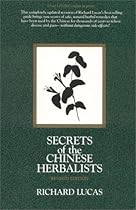 The root is the part of the herb used for making the tea. Although hard substances such as roots and barks are generally boiled continuously for a certain length of time in order to extract their active properties, delicate yellow dock root is an exception to this rule and must never be allowed to boil continuously. It is simply prepared by placing one teaspoonful of the cut roots in a cup and pouring on boiling water. The cup is covered with a saucer and allowed to stand for one-half hour. It is then strained, reheated, and taken hot. One cup of the tea is taken three or four times a day. The root is the part of the herb used for making the tea. Although hard substances such as roots and barks are generally boiled continuously for a certain length of time in order to extract their active properties, delicate yellow dock root is an exception to this rule and must never be allowed to boil continuously. It is simply prepared by placing one teaspoonful of the cut roots in a cup and pouring on boiling water. The cup is covered with a saucer and allowed to stand for one-half hour. It is then strained, reheated, and taken hot. One cup of the tea is taken three or four times a day. |
| A Chinese friend of ours suggested he try an Oriental herb remedy called Gum Wall tea whenever he felt he was coming down with a cold. My husband agreed to try the remedy, and were we ever surprised to find it worked! Please pass the good word along to others."Mrs. L.P.
HUA-HSIAN
English Name: Anise
Botanical Name: Pimpinella anisum
Anise is of Eastern origin but is now cultivated in many parts of the world. The seeds are well-known flavoring agents for cakes, relishes, soups, sauces, and wines. In the old days it was a popular custom to chew anise seeds to sweeten the breath. |
| When you use an herb gargle for daily oral health, it should be used warm, not hot.
MU-YAO
English Name: Myrrh
Botanical Name: Balsamodendron myrrh
From remote antiquity, the fragrant gum-resin of the myrrh tree has been a constituent of Oriental medicines, perfumes, incense, precious ointments, and sacred oils. Originally imported from Persia, the gum-resin of myrrh is now produced to some extent in the southern regions of China.
As a mouth wash, one-half teaspoon of myrrh tincture in a glass of warm water soothes delicate mucous membranes of the mouth and throat. |
| In olden times the herb was also regarded as a magical plant. On the Chinese New Year, Cantonese cleaned out their homes and posted the sword-shaped leaves of sweet flag near the door. Beneath them they placed a pair of red scrolls bearing an inscription such as "The sweet flag like a sword destroys a thousand evil influences."
Medicinal Use
Sweet flag is a specific for the type of heartburn that is accompanied by sour eructations. This is a distressing condition in which belching brings up from the stomach a hot, searing, watery fluid, sometimes in considerable amounts. |
Lesley Tierra
See book keywords and concepts |
 Since it is a very cold herb, it should be used sparingly by those with coldness or indigestion with gas and bloatedness. Since it is a very cold herb, it should be used sparingly by those with coldness or indigestion with gas and bloatedness. |
Bill Sardi
See book keywords and concepts |
 But a recent laboratory analysis has been unable to detect formononetin in samples of this herb. [Phytomedicine 9: 461-67, 2002] A study conducted in Austria confirmed the estrogen-like activity of soy and red clover, but not black cohosh. But a recent laboratory analysis has been unable to detect formononetin in samples of this herb. [Phytomedicine 9: 461-67, 2002] A study conducted in Austria confirmed the estrogen-like activity of soy and red clover, but not black cohosh. |
Andreas Moritz
See book keywords and concepts |
 This herb seems to work both at the causal and symptomatic level, which may explain the absence of side effects. This herb seems to work both at the causal and symptomatic level, which may explain the absence of side effects. |
Robert S. McCaleb, Evelyn Leigh, and Krista Morien
See book keywords and concepts |
 Most of these studies have been German and have focused on the herb's use in menopause. Their results show that black cohosh extract is significantly more effective than placebo and comparable with hormone-replacement therapy in relieving menopause symptoms. A large multicenter study of 629 participants found that black cohosh was effective in at least 80 percent of women within 6 to 8 weeks. Most of these studies have been German and have focused on the herb's use in menopause. Their results show that black cohosh extract is significantly more effective than placebo and comparable with hormone-replacement therapy in relieving menopause symptoms. A large multicenter study of 629 participants found that black cohosh was effective in at least 80 percent of women within 6 to 8 weeks. |
Andreas Moritz
See book keywords and concepts |
 The following list provides you with alternative solutions to pain management, without interfering with the body's own efforts to heal itself:
Boswellia (Boswellia serrata) is an Ayurvedic herb. It alleviates pain and improves mobility in people with arthritis. It also has anti-carcinogenic, anti-tumor, and blood lipid lowering activities. Dosage: 1,200 to 1,500 mg of a standardized extract containing 60 to 65 percent boswellic acids two to three times daily.
Bromelain, an enzyme derived from the pineapple stem, has anti-inflammatory effects. The following list provides you with alternative solutions to pain management, without interfering with the body's own efforts to heal itself:
Boswellia (Boswellia serrata) is an Ayurvedic herb. It alleviates pain and improves mobility in people with arthritis. It also has anti-carcinogenic, anti-tumor, and blood lipid lowering activities. Dosage: 1,200 to 1,500 mg of a standardized extract containing 60 to 65 percent boswellic acids two to three times daily.
Bromelain, an enzyme derived from the pineapple stem, has anti-inflammatory effects. |












